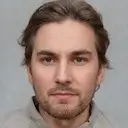The Smart Guide to Choosing Languages for Translating Content
In today’s connected world, global audiences are within everyone’s reach. Over 7,000 languages are spoken worldwide (Ethnologue, 2023). As a result, translating and localizing content isn’t just an option—it’s essential for making your message accessible, easy to find, and engaging for diverse groups.
You may wonder how to pick the right language for translation. Translating into every language is not possible. This guide breaks down the key factors to help you prioritize which languages to choose for content translation.
Key Factors to Consider When Selecting Translation Languages
There’s no single answer for every person or business. However, when you look at the right metrics and trends, you can make informed decisions. Below are the main points to review before you start translating your content.
Check Where Your Audience Comes From
Location matters. The optimal languages for translation depend on where most of your audience lives.
- Use tools like Google Analytics to see your website traffic sources.
- Go to Audience → Geo → Location and Language tabs.
- The Location tab shows top countries or regions visiting your site.
- The Language tab lists the languages visitors use to access your content.
Translating your content into the most popular languages among your visitors will benefit your site the most. Translating every language in the list isn’t required. Focus on those bringing in the most engagement and traffic.
- Review other user metrics, such as high bounce rates and pages per session, to refine your decision.
Optimizing for Video and Social Content
For YouTube or other video channels, examine the Channel Analytics section in YouTube Studio.
- Click Audience and scroll to the Geography section.
- Find where your viewers are based for a specific time period.
Even if a region has low viewers now, that could be due to a lack of local language content. If you want to expand in a specific region, translating your videos or captions can help grow your audience quickly.
Is Your Strategy Local or Global?
Do you operate in many countries, or just one?
- International companies benefit from translating content for both staff and customers.
- For businesses in one region, don’t assume one language is enough. Translation can help you expand your audience and boost SEO performance (CSA Research, 2021).
Check which languages your main competitors are using. Look at their websites, blogs, and social media. This research shows where the biggest opportunities for translation may be.
Most Popular Languages for Translation (2023 Data)
While there’s no universal solution, certain languages are more in demand for translation.
- Simplified Chinese — 1.2 billion native speakers
- Spanish — 477 million
- English — 379 million
- German — 95 million
- Korean — 80 million
- French — 77 million
- Italian — 67 million
- Dutch — 23 million
- Swedish — 10 million
- Hebrew — 5 million
However, don’t focus only on native speakers. For example, English may have 379 million native speakers, but about 753 million more people use it as a second language (British Council, 2022).
Spanish is another example. Many countries use Spanish, but each has unique dialects. Proper localization ensures your translated content won’t confuse or frustrate new audiences.
Steps to Prioritize Language Translation
- Analyze audience data. Use web, video, and social analytics to see which languages and locations matter most to your brand.
- Study competitors. Note which languages other successful companies support.
- Research market size. Consider the number of internet users by language—English, Chinese, Spanish, Arabic, and Portuguese together make up most of online use (Internet World Stats, 2023).
- Weigh the need for localization. Remember that language variants—such as different forms of Spanish, French, or Arabic—require extra attention for accuracy.
- Predict ROI. Estimate how much new traffic, leads, or sales you could gain by adding each language.
How to Ensure Quality in Content Translation
Many turn to fast machine translation for convenience. Although automated transcription and translation tools have improved, they still fall short in accuracy and cultural awareness (Slator, 2022).
- Misunderstandings or poorly translated material can damage your brand.
- Professional services offer native speakers, in-depth knowledge, and precise quality control.
- More than 70% of consumers say they are more likely to buy products with information in their native language (CSA Research, 2020).
Choose a team that offers native translators, thorough proofreading, and adapts to different cultures.
Translation Services to Boost Your Global Reach
Choosing the best languages for translation depends on your goals, your current audience, and your growth plans. Start by analyzing your data and research your market. Always localize, not just translate. Using the right translation and localization services, you can reach more people and increase your impact.
GoTranscript can help with every step:
- Professional text translation in over 50 languages
- Audio and video translation for maximum reach
- Closed caption and subtitling for accessibility
- Automated transcription and AI subscription services to speed up your workflow
- Transparent pricing for transcription and captioning services
When you’re ready to make your content global, order transcription or order captions easily with GoTranscript.



















 Verified Order
Verified Order